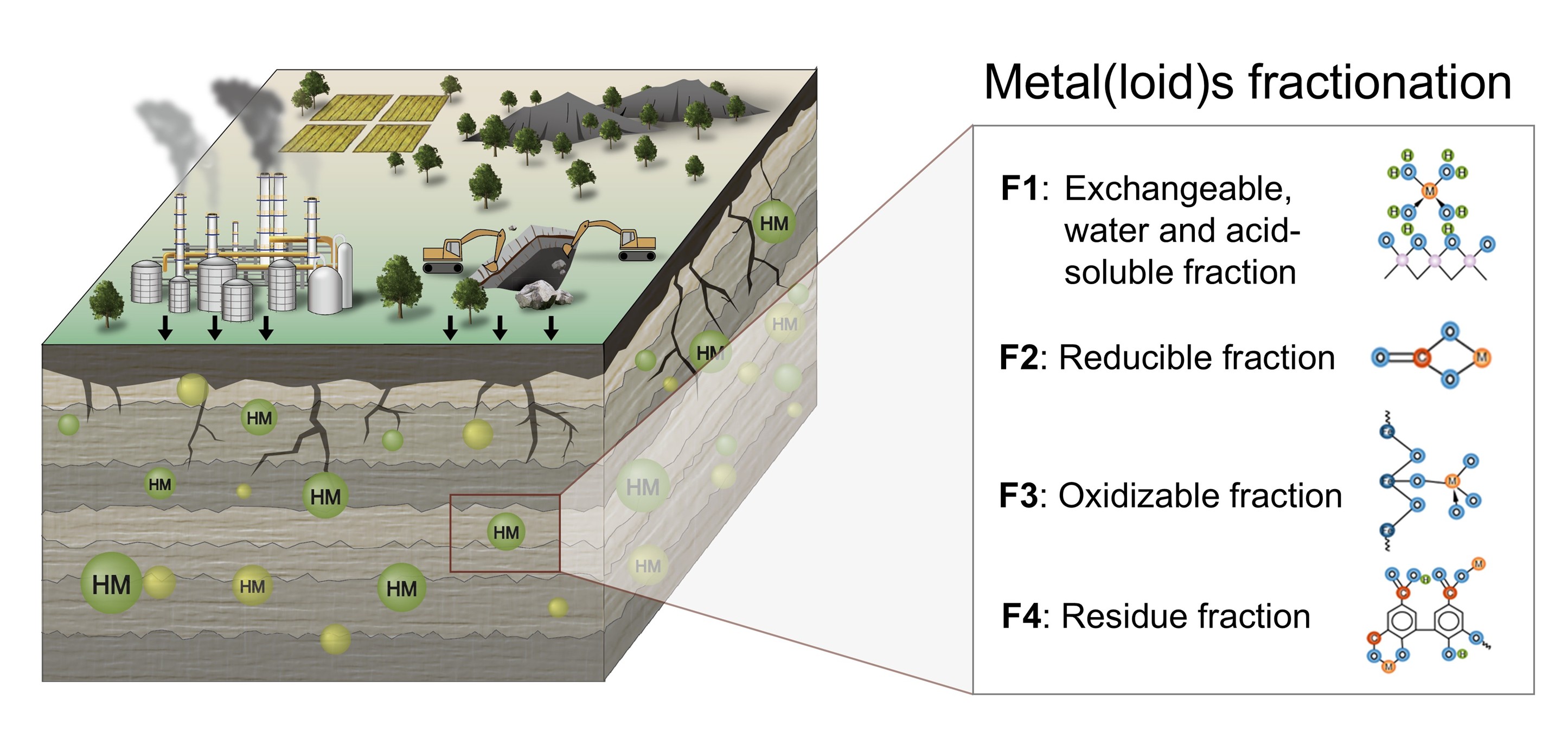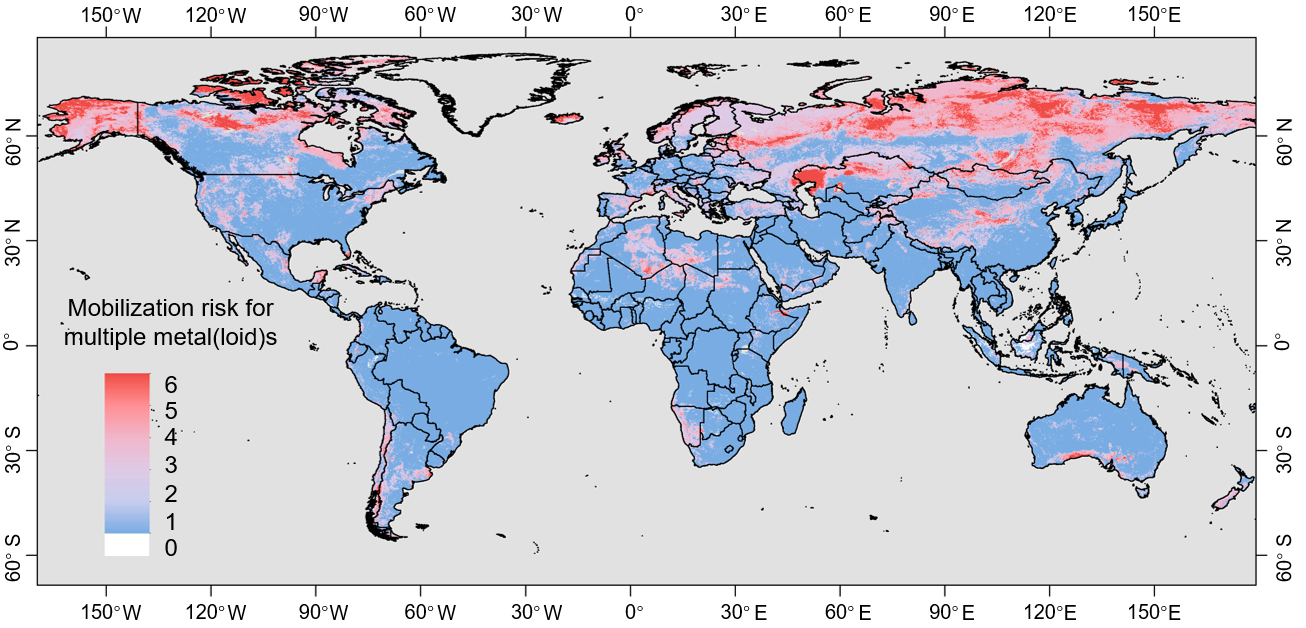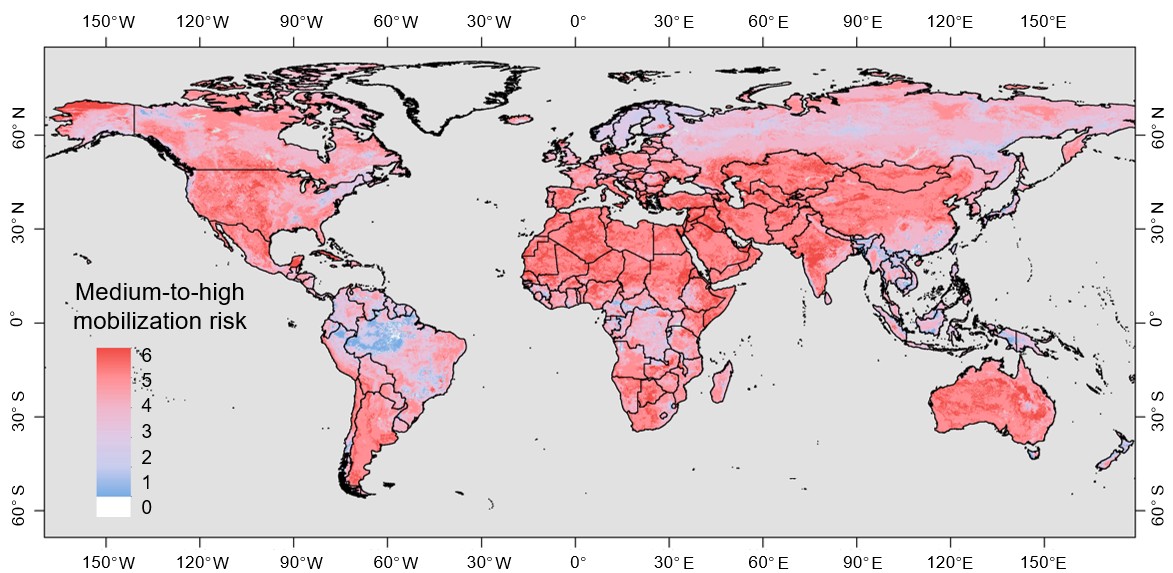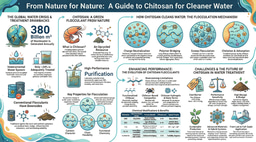Machine learning unveils global patterns of soil metal(loid) mobility and its implication for sustainable soil management
Published in Chemistry, Earth & Environment, and Agricultural & Food Science

Soil contamination by metals and metalloids (metal[loid]s) is a global issue with significant risks to human health, ecosystems, and food security. To assess the risks associated with soil metal(loid) contamination accurately and inform effective remediation and policymaking, it is crucial to consider not only the total content of these pollutants but also their mobility. Metal(loid) mobility dictates their bioaccessibility for plant uptake and subsequent entry into the food chain, making it a key determinant of their environmental fate and potential risks. A comprehensive understanding of metal(loid) mobility in global soils, which is largely governed by metal(loid) fractionation (Figure 1), remains a critical gap in the literature.

Figure 1 An illustration of soil metal(loid) contamination and metal(loid) fractionation.
Recently, Prof. Zhang Lin and Prof. Chongchong Qi from Central South University published a groundbreaking study in Nature Communications titled “Global and regional patterns of soil metal(loid) mobility and associated risks.” Their research developed a theory-guided machine learning model that could predict the fractionation of 49 metal(loid)s using a complied global dataset. By integrating global topsoil properties at a 5-km resolution, they generated the first global maps of soil metal(loid) mobility and uncovered the fundamental drivers of their mobility in soil. Their study highlights the dynamic nature of metal(loid) mobility, providing insights for mitigating global soil pollution and supporting sustainable soil management.
The mobilization risk map of the most prevalent metal(loid)s in soil revealed a high degree of spatial heterogeneity globally, with a pronounced concentration of high mobilization risk areas in the high-latitude regions of the Northern Hemisphere (Figure 2). The predicted mobilization risk hotspots existed on all continents, predominantly in central and northern Asia, northern parts of North America and Africa, southern Oceania, and South America. Such spatial heterogeneity was mainly affected by soil properties, primarily soil organic carbon and pH.

Figure 2 Global mobilization risk hotspots revealed by the soil metal(loid) mobility model.
Notably, they also investigated how the soil carbon sequestration, a globally recognized strategy for negative CO2 emission, affected the mobilization risk of soil metal(loid)s. Assuming the Four Per Mille Initiative was consistently fulfilled from 2024 to 2050, their mobility prediction model revealed that the mobilization risk of metal(loid) was evidently heightened (Figure 3). An increase in the mobilization risk of metal(loid)s occurred in most countries, and spatial variation existed because of the coupled influences of many factors (i.e., soil properties).

Figure 3 Influence of the Four Per Mille Initiative on global mobilization risk hotspots in 2050.
Their findings hold significant implications for global soil remediation and sustainable soil management. The metal(loid) mobility model can be used as a guide for prioritizing metal(loid) mobility testing and for raising awareness. Moreover, their results suggest a disproportionate increase in the mobilization risk compared with the contamination level, highlighting the need for more tailored mobility investigations in specific countries/regions with escalating metal(loid) contamination. Based on the global mobility maps, it seems unfeasible to establish singular regulatory guidance values (RGVs) worldwide or for countries with large land areas and diverse soil types. Therefore, they propose the establishment of new RGVs that tailored to local environment, as this is a vital step towards improved soil regulation. Finally, their results indicate the adoption of soil carbon sequestration worldwide as a key carbon sequestration strategy might be considered highly risky. Instead, countries must incorporate diverse soil carbon sequestration strategies to address the spatial variation in metal(loid) mobilization risk increases.
In conclusion, their study demonstrates the potential of ML in transforming soil metal(loid) fractionation analysis, providing a foundation for more advanced, tailored, and accurate ML approaches in soil science.
Follow the Topic
-
Nature Communications

An open access, multidisciplinary journal dedicated to publishing high-quality research in all areas of the biological, health, physical, chemical and Earth sciences.
Related Collections
With Collections, you can get published faster and increase your visibility.
Women's Health
Publishing Model: Hybrid
Deadline: Ongoing
Advances in neurodegenerative diseases
Publishing Model: Hybrid
Deadline: Dec 24, 2025


Please sign in or register for FREE
If you are a registered user on Research Communities by Springer Nature, please sign in